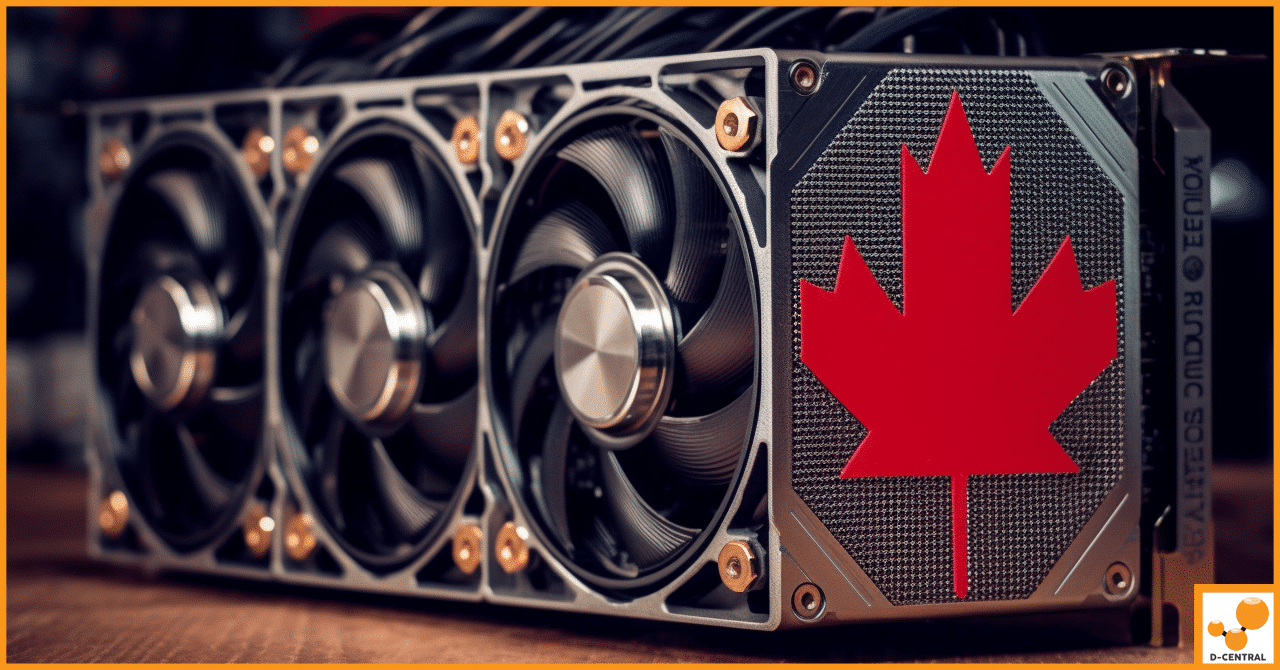
Guide to Purchasing Antminer S19: Top Trusted Suppliers
Bitcoin mining stands as the cornerstone of the Bitcoin network, ensuring security, functionality, and the continuous addition of new bitcoins
4479 Desserte Nord Autoroute 440, Laval, QC H7P 6E2

Depuis très longtemps, l’extraction de Bitcoin, en particulier les fabricants de circuits intégrés spécifiques à une application (ASIC), ont rapporté l’efficacité énergétique des machines d’extraction.
Il existe plusieurs entreprises de matériel d’extraction et chaque entreprise fabrique différents types de matériel ASIC pour explorer de manière plus efficace l’extraction de Bitcoin. Lorsque le matériel ASIC devient plus économe en énergie, le coût de l’extraction de Bitcoin diminue en conséquence.
Honnêtement, tout le monde veut faire plus de profits et payer moins de dettes et de factures. Par conséquent, la plupart des mineurs veulent un mineur économe en énergie, ce qui signifie plus de profits pour les fabricants de matériel qui peuvent produire un matériel plus économe en énergie.
Jetons un coup d’œil à l’évolution du matériel d’extraction.
L’exploitation minière de GPU au début de l’extraction de Bitcoin
Il y a quelque temps, l’extraction était réalisée à l’aide de GPU, communément appelées cartes graphiques. Le chipset fournissait une puissance de traitement rapide deux ou trois fois supérieure à celle des circuits spécialisés en calcul parallèle par rapport au CPU.
À cette époque, les concepteurs mondiaux de GPU, Nvidia et AMD, entretenaient une domination mondiale sur ce marché jusqu’à aujourd’hui. Les mineurs de GPU et de crypto-monnaie bénéficiaient mutuellement de cette situation. Mais malheureusement, il fallait développer un mineur ASIC plus rapide et dédié, ce qui réduisait l’utilisation des machines GPU.
Les avantages de l’utilisation de mineurs ASIC et de GPU ne sont pas clairs, mais la différence devient plus choquante lorsque vous comparez les mineurs GPU, FPGA et ASIC dans le secteur de l’extraction de Bitcoin. Entre la sortie de l’ATI Radeon HD 6990 en mars 2011 et l’Avalon1 de Canaan en janvier 2013, la différence d’efficacité est passée de 510 000 W/TH à 8 333 W/TH.
En conséquence, Nvidia et AMD ont cessé de compter entièrement sur l’extraction de crypto-monnaie.
L’extraction à l’aide d’ASIC et sa configuration d’efficacité
ASIC est une puce très spécialisée conçue et optimisée spécifiquement pour une tâche (uniquement l’extraction). Cet outil mentionné est extrêmement puissant et ses puces préprogrammées sont intégrées dans les machines. Le système de refroidissement de l’outil est intégré au système, et les ports Ethernet sont connectés à Internet via une interface de navigateur ou une adresse IP.
Notez que les machines ASIC ne peuvent pas être utilisées pour extraire des crypto-monnaies utilisant différents algorithmes. Fondamentalement, ses paramètres ne permettent que de configurer les vitesses d’extraction et d’extraire différentes crypto-monnaies en utilisant le même algorithme.
Processus de production
Il existe cinq principaux processus de production, cela inclut :
La conception de la puce est la première étape. Ici, la conception de la puce et de la logique de base est établie, et la disposition physique est cartographiée, et une vérification de retour en arrière sur le plan est effectuée.
La production de tranches de silicium. La fonderie produit les tranches pour la conception ASIC. Les entreprises de conception et les fonderies peuvent conclure des accords de non-divulgation pour préserver les droits de propriété fondamentaux. La fonderie reçoit des informations détaillées sur la conception de la puce et la disposition est terminée. Une fois que la fonderie a réussi à fabriquer le prototype, elle est lancée pour une production de masse. Il faut environ trois mois pour livrer les tranches une fois les commandes passées.
Emballage et test. Une fois que les tranches ont terminé la production, elles sont expédiées aux assemblages et tests de semi-conducteurs externalisés (OSAT) pour être emballées dans les puces ASIC, où elles sont testées pour s’assurer que les produits sont en excellent état de fonctionnement et répondent à toutes les procédures de contrôle de qualité. Les prévisions de commande donnent à l’OSAT 30 jours à l’avance pour que les entreprises achètent les matériaux nécessaires. Notez que l’acheteur a le droit de demander un remboursement pour tout emballage endommagé ou à faible rendement à la livraison.
Approvisionnement en autres composants. Outre les puces ASIC, le matériel d’extraction comprend d’autres composants tels que la carte de circuit imprimé, le boîtier du ventilateur et bien d’autres. Une entreprise peut décider de maintenir la conception ou de la modifier en fonction du fournisseur des composants.
Assemblage est l’avant-dernière étape, et il consiste à créer des cartes de circuits imprimés montées et à les intégrer pour produire le produit final. La conception peut impliquer des tests du produit à différentes étapes pour garantir et enregistrer les résultats des tests.
L’entreposage est la dernière étape, après laquelle le stockage de la qualité et des produits est effectué.
Jetons un coup d’œil à la bataille de suprématie.
Aperçu et bref historique
Après le lancement de Bitcoin au début de 2013, le premier mineur Bitcoin, ASIC, a été expédié à Avalon. Notez que Butterfly Labs a été la première entreprise à annoncer le succès de la fabrication du premier mineur ASIC au milieu de 2012.
Après avoir annoncé le succès de la fabrication d’un mineur ASIC, ils ont fait des dizaines de millions de dollars de commandes, mais malheureusement, ils n’ont pas pu les livrer. Lorsqu’ils ont assisté au sommet Bitcoin à la fin de 2012 et au début de 2013, ils ont été submergés par les frustrations. Les clients réclamaient leurs mineurs.
En 2014, un tribunal américain a ordonné la fermeture de Butterfly Labs. Ce fut une chance pure pour Avalon, qui est devenu le leader du marché depuis 2013.
De début 2015 à 2018, Bitmain a acquis une position dominante sur le marché car il disposait des outils de marché les plus efficaces. En 2017, Bitmain était puissant sur le marché haussier et possédait avec succès une part d’environ 75%.
Au cours des derniers mois, la concurrence s’est intensifiée avec des produits plus performants de nouveaux acteurs du marché comme MicroBT qui gagnent en popularité et évincent Bitmain de sa position de leader. En 2019, la part de marché de MicroBT était estimée à 35%, cependant, Bitmain reste le leader incontesté et force à compter.
Canaan
D’après ce que nous avons vu plus tôt dans le cadre de l’IPO de Canaan, nous pouvons conclure que Canaan a acquis le nom d’Avalon en 2014. Il s’agit de la première entreprise à rendre disponible au grand public un ASIC Bitcoin. Cela a été considéré comme une manœuvre intelligente et bien exécutée sur le plan financier de la part de l’entreprise.
Malheureusement, l’entreprise a moins performé que prévu depuis l’IPO, générant une perte d’environ 150 millions de dollars en 2019 par rapport à une perte estimée d’environ 29,8 millions de dollars.
Le cours de ce manque important était dû à la réduction de la valeur des stocks anticipés, atteignant 103 millions de dollars en 2019. Le prospectus d’introduction en bourse comprend des dépréciations de provision au cours des six premiers mois de 2019 seulement de 0,1 million de dollars, comparé à une charge totale de 103 millions de dollars pour l’année entière.
En fait, la dépréciation était trop importante et est survenue rapidement après avoir levé 9 millions de dollars lors de l’IPO, la situation commençait à s’aggraver, pour le moins dire, « en raison des circonstances actuelles de la diminution de moitié du marché et des prix raisonnables et investissement supplémentaire dans une illusion en 2017. L’entreprise et tout le monde s’attendaient à une faible demande et à de légères dépréciations, mais l’étendue nous a pris de court. Les investisseurs sont mécontents de la part de 76,99 % de l’IPO, car elle était supérieure à Bitcoin. À l’époque, Bitcoin était confronté à une baisse de 17 % ».
Le 22 mai 2020, Canaan a annoncé ses premiers résultats trimestriels, avec un chiffre d’affaires de 9,8 millions de dollars, en hausse de 44,6% par rapport à l’année précédente, et une perte nette de 5,7 millions de dollars. Ce qui est intéressant dans ces résultats, c’est l’appel de gain où la direction a décidé de fournir une mise à jour de la situation du marché et des perspectives pour la prochaine génération d’actions Canaan.
En raison de la forte perte que Canaan a enregistrée au cours de son premier trimestre, l’entreprise a blâmé la pandémie mondiale de février pour ses ventes relativement faibles.
La société a également indiqué que la taille moyenne des commandes augmentait à mesure que l’industrie minière devenait plus dynamique et plus solide. MicroBT et Bitmain ont également déclaré la même chose.
Même après avoir combiné leurs forces, nous constatons un nombre croissant d’enquêtes, qui sont importantes et des enquêtes potentielles sur les commandes en vrac. Nous constatons que les clients clés ou les gros clients stimulent les ventes.
En examinant l’appel aux gains de Canaan en 2020, avec un état de la technologie, la société a indiqué que ses produits de 5 nanomètres seraient disponibles sur le marché à partir de 2021. La direction de Canaan a également mentionné que le nouveau modèle Avalon A1146Pro aurait une efficacité de 42J/TH. Comparé à leur modèle A1166 actuellement en vente, avec une efficacité de 47J/TH, le nouveau modèle Avalon A1146Pro est toujours en retard par rapport aux deux grands acteurs.
MicroBT et Bitmain, qui ont leur produit à 30J/TH et moins. Idéalement, ces deux sociétés semblent construire un avantage d’efficacité et laisser leurs concurrents loin derrière.
Cependant, la société estime que la production de 5 nanomètres, qui est la technologie la plus avancée, nécessite un cycle plus long pour être produite en masse. Canaan estime également qu’en 2021, le produit atteindra la production de masse.
Je pense que Canaan aura du mal à gagner la confiance des investisseurs en raison de ce qui s’est passé peu de temps après l’IPO. De plus, les tensions géopolitiques peuvent représenter un défi car Canaan est cotée aux États-Unis, il est donc plus difficile pour les Chinois de l’accepter.
De plus, Canaan a levé plus de 90 millions de dollars sur les marchés américains, recevant ainsi une trésorerie nette de 60 millions de dollars à la fin de 2019. En regardant leur premier trimestre 2020, cela est passé à 12,45 millions de dollars.
Ce que nous avons appris en 2020, c’est que la fabrication d’ASIC est un marché très intense. Si une entreprise n’a pas de bonnes avancées techniques, elle pourrait avoir du mal à rivaliser avec Bitmain et MicroBT.
En regardant le cas de Canaan, l’entreprise peine à générer du cash disponible et une transparence pour ses clients et ses parties prenantes. Cependant, cela ne signifie pas que l’entreprise est morte ; cela signifie que l’entreprise a beaucoup à faire et à changer pour améliorer son jeu.
Ebang
En avril 2020, Ebang, un fabricant chinois d’ASIC, a déposé une demande d’introduction en bourse aux États-Unis, après une tentative infructueuse deux ans plus tôt à Hong Kong. Le dépôt récent d’Ebang montre que l’entreprise rencontre des difficultés de vente et de grosses pertes, tout comme Canaan.
En 2019 seulement, Ebang a enregistré des pertes considérables de 30,6 millions de dollars sur un chiffre d’affaires de 109 millions de dollars. En 2020, le chiffre d’affaires a chuté de plus de 67 %, ce qui est pire que la baisse de 47% de Canaan. La bonne nouvelle est que les pertes n’ont pas été aussi importantes que pour Canaan, avec une marge d’environ 40 %.
L’entreprise a déclaré que « du fait de la chute significative des prix du bitcoin en 2018 et 2019, nous avons constaté une dépréciation pour les stocks potentiellement invendus et ceux du marché à prix inférieur qui ont eu un impact négatif sur notre rentabilité ». L’entreprise a également souligné que si le prix du bitcoin chute de manière significative à nouveau, elle sera contrainte de faire les mêmes dépréciations.
En 2016, Ebang a lancé son premier modèle EbitE9+. Cependant, en examinant leur rapport, l’entreprise n’a jamais été proche d’être un leader dans ce domaine. Le dernier modèle Ebit a une efficacité de 57J/TH, ce qui le place derrière les quatre autres fabricants mentionnés précédemment dans cet article.
Ebang admet que le défi environnemental et la panique causée par l’épidémie de la pandémie mondiale au début de 2020 ont affecté négativement leur activité. Mais ils espèrent que cela n’affectera pas de manière substantielle et défavorable les résultats de leur exploitation et leur situation financière.
Nous assistons à une tension politique actuelle entre les États-Unis et la Chine. Les profits de Canaan mettent en garde contre leur IPO et le marché d’Ebang est faible en ce qui concerne les chances de réussite de leur IPO aux États-Unis. Ce dont nous sommes sûrs, c’est que nous aurons un marché volatil.
Bitmain
Bitmain est l’un des plus grands et des leaders de la fabrication d’ASIC, et c’est toujours une société privée qui a connu une tentative infructueuse d’IPO en 2018. L’IPO reste à l’ordre du jour de l’entreprise en raison des luttes de pouvoir entre ses cofondateurs, Micree Zhan et Jihan Wu.
Selon les informations de l’IPO de 2018, Micree Zhan est le leader et possède plus de 35 % de l’équité de Bitmain par l’intermédiaire de sa société connue sous le nom de Cosmic Frontier Limited. Jihan Wu occupe la deuxième position avec environ 20,25 % des actions via sa société connue sous le nom de Vehicle Victory Coverage Limited (BVI).
Il est triste de voir que Bitmain a échoué dans son acceptation en tant qu’IPO jusqu’à ce que les problèmes de lutte de pouvoir soient résolus. Cependant, il semble que les marchés publics soient moins tolérants à ce genre de luttes de pouvoir chez Bitmain.
En 2019, Bitmain a perdu sa position de leader en matière d’efficacité au profit de MicroBT et un peu moins d’Innosilicon et Ebang. On peut considérer que cela est le résultat de l’échec des tentatives de sortie de bande de Bitmain.
Malgré son faible rendement, Bitmain reste en tête du marché grâce à ses solides capacités de fabrication et à ses relations étroites avec les principaux acteurs de la chaîne d’approvisionnement.
Le dernier modèle de Bitmain, l’Antminer S19Pro, a une efficacité de 30J/TH ; cette technologie de pointe est soutenue par une efficacité de Bitsmain S19 Pro de 30J/TH. Malgré son gouvernement cosmique, ses capacités de fabrication et son ampleur qui semblent être confrontées, Bitmain reste le numéro un de l’industrie.
MicroBT
La société a été fondée en 2016 par le Dr Yang Zuoxing, ancien directeur de Bitmain, qui est toujours considéré comme le moteur de la réussite de Bitmain dans les premiers temps. On estime que le Dr Yang est le plus grand actionnaire de MicroBT.
Lorsqu’il a quitté Bitmain, il a été poursuivi pour violation des règles de brevet de Bitmain et pour détournement de fonds de 15 000 dollars. Mais maintenant, nous pouvons dire que tous ces problèmes ont été résolus.
La société a annoncé avoir bouclé un financement en janvier 2019 pour une valorisation stupéfiante de 510 millions de dollars. Cependant, le montant investi par les investisseurs est resté confidentiel et hors de la portée du public.
MicroBT a lancé son premier produit en 2017 et au cours des dernières années, l’entreprise a été performante et a réussi à prendre une part d’environ 35 % du hashrate du réseau Bitcoin par rapport à Bitmain. De plus, contrairement à ses concurrents, l’entreprise affiche un taux de réussite de 100 % en ce qui concerne les sorties de bande, ce qui se traduit par des produits.
Les produits de l’entreprise sont plus économes en énergie que ceux de ses concurrents Bitmain tout au long de 2019 et 2020. Le Whatsminer M30S++ fonctionne à 3J/TH. Bien que cela soit légèrement inférieur au Bitsmain S19 Pro, qui fonctionne avec une efficacité de 30J/TH, MicroBT est en tête depuis les 19 derniers mois. Cela est logique et correct, car le prochain produit de MicroBT reprendra la tête.
Conclusion
Comme nous l’avons appris dans cet article, l’efficacité des mineurs ASIC présente de nombreux avantages par rapport aux appareils électroniques. Nous avons également constaté qu’il existe des différences considérables de performances et d’efficacité entre les mineurs ASIC en fonction du fabricant.
Dans l’extraction de Bitcoin, l’efficacité est mesurée par le ratio de la consommation d’énergie, et la puissance est mesurée en watts et le hashrate des mineurs. Par conséquent, plus un mineur ASIC est efficace, plus l’extraction de Bitcoin devient bon marché, rend notre environnement plus vert et l’entreprise capable de construire le mineur ASIC le plus économe en énergie réalise plus de profits, comme nous l’avons vu pour MicroBT et Bitmain.
Avis de non-responsabilité : les informations fournies sur ce blog sont fournies à titre informatif uniquement et ne doivent en aucun cas être considérées comme une forme de conseil.
Articles Similaires

Bitcoin mining stands as the cornerstone of the Bitcoin network, ensuring security, functionality, and the continuous addition of new bitcoins
Cryptocurrency mining has become an increasingly popular way to earn money, with many people investing in Antminer S19 machines to

Welcome to the exciting world of cryptocurrency mining in Canada! As the Canadian cryptocurrency market continues to grow and thrive,